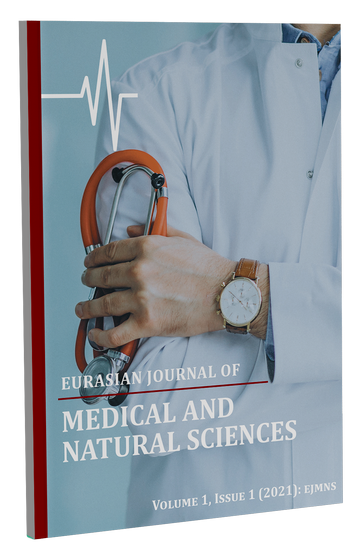ПАТОГЕНЕТИЧЕСКИЕ АСПЕКТЫ КОРОНАВИРУСНОЙ ИНФЕКЦИИ (COVID-19)
Main Article Content
Аннотация:
Коронавирус-2 (SARS-CoV-2), сопряженный с тяжелым острым респираторным синдромом, является возбудителем текущей пандемии коронавирусной болезни 2019 года (COVID-19). Наряду с исследованиями вирусологии SARS-CoV-2, понимание фундаментальных физиологических и иммунологических процессов, лежащих в основе клинических проявлений COVID-19, жизненно важно для идентификации вируса и рационального дизайна эффективных методов лечения. В данном обзоре будет рассмотрена патофизиология инфекции SARS-CoV-2. Мы описываем взаимодействие SARS-CoV-2 с иммунной системой и последующий вклад дисфункциональных иммунных реакций в прогрессирование заболевания
Ключевые слова:
Article Details
Как цитировать:
Библиографические ссылки:
Покровский В.И., Киселев О.И., Назаров П.Г. SARS: тяжелый острый респираторный синдром. Новый вирус, новая болезнь. Цитокины и воспаление. 2003;2(2):42–51. [Pok- rovsky VI, Kiselev OI, Nazarov PG. SARS: severe acute respiratory syndrome. New virus, new disease. Tsitokiny i vospalenie = Cytokines and Infiammation. 2003;2(2):42–51 (In Russ.)]
Paules C.I., Marston H.D., Fauci A.S. Coronavirus infections— more than just the common cold. JAMA. 2020;323(8):707–8. https://doi.org/10.1001/jama.2020.0757
Liu J, Zheng X, Tong Q, Li W, Wang B, Sutter K, et al. Overlapping and discrete aspects of the pathology and pathogenesis of the emerging human pathogenic coronaviruses SARS-CoV, MERS-CoV, and 2019-nCoV. J Med Virol. 2020. [Epub ahead of print] https://doi.org/10.1002/jmv.25709
Guan WJ, Ni ZY, Hu Y, Liang WH, Ou CQ, He JX, et al. Clinical Characteristics of Coronavirus Disease 2019 in China. N Engl J Med. 2020. [Epub ahead of print] https://doi.org/10.1056/NEJMoa2002032
The Novel Coronavirus Pneumonia Emergency Response Epidemiology Team. The Epidemiological Characteristics of an Outbreak of 2019 Novel Coronavirus Diseases (COVID-19) — China, 2020. China CDC Weekly. 2020;2(8):113–22.
Rosjo H, Varpula M, Hagve TA, Karlsson S, Ruokonen E, Pettilä V, et al. Circulating high sensitivity troponin T in severe sepsis and septic shock: distribution, associated factors, and relation to outcome. Intensive Care Med. 2011;37(1):77–85. https://doi.org/10.1007/s00134-010-2051-x
Shalhoub S, Farahat F, Al-Jifri A, Simhairi R, Shamma O, Siddiqi N, Mushtaq A. IFN-α2a or IFN-β1a in combination with ribavirin to treat Middle East respiratory syndrome coronavirus pneumonia: a retrospective study. J Antimicrob Chemother. 2015;70(7):2129–32. https://doi.org/10.1093/jac/dkv085
ARDS Definition Task Force, Ranieri VM, Rubenfeld GD, Thompson BT, Ferguson ND, Caldwell E, et al. Acute respiratory distress syndrome: the Berlin Definition. JAMA. 2012;307(23):2526–33. https://doi.org/10.1001/jama.2012.5669
Riviello ED, Kiviri W, Twagirumugabe T, Mueller A, Banner- Goodspeed VM, Ofcer L, et al. Hospital incidence and outcomes of the acute respiratory distress syndrome using the Kigali modification of the Berlin definition. Am J Respir Crit Care Med. 2016;193(1):52–9. https://doi.org/10.1164/rccm.201503- 0584OC
Alshahrani MS, Sindi A, Alshamsi F, Al-Omari A, El Tahan M, Alahmadi B, et al. Extracorporeal membrane oxygenation for severe Middle East respiratory syndrome coronavirus. Ann Intensive Care. 2018;8(1):3. https://doi.org/10.1186/s13613-017-0350-x
Combes A, Brodie D, Bartlett R, Brochard L, Brower R, Conrad S, et al. Position paper for the organization of extracorporeal membrane oxygenation programs for acute respiratory failure in adult patients. Am J Respir Crit Care Med. 2014;190(5):488–96. https://doi.org/10.1164/rccm.201404-0630CP
Schmidt GA, Girard TD, Kress JP, Morris PE, Ouellette DR, Alhazzani W, et al. Official executive summary of an American Thoracic Society/American College of Chest Physicians clinical practice guideline: liberation from mechanical ventilation in critically ill adults. Am J Respir Crit Care Med. 2017;195(1):115–9. https://doi.org/10.1164/rccm.201610-2076ST
Klompas M, Branson R, Eichenwald EC, Greene LR, Howell MD, Lee G, et al. Strategies to prevent ventilator-associated pneumonia in acute care hospitals: 2014 update. Infect Control Hosp Epidemiol. 2014;35(8):915–36. https://doi.org/10.1086/677144
Stockman LJ, Bellamy R, Garner P. SARS: systematic review of treatment effects. PLoS Med. 2006;3(9):e343. https://doi. org/10.1371/journal.pmed.0030343
Rochwerg B, Alhazzani W, Gibson A, Ribic CM, Sindi A, Heels-Ansdell D, et al. Fluid type and the use of renal replacement therapy in sepsis: a systematic review and network meta- analysis. Intensive Care Med. 2015;41(9):1561–71. https://doi.org/10.1007/s00134-015-3794-1
Rochwerg B, Alhazzani W, Sindi A, Heels-Ansdell D, Tha- bane L, FoxRobichaud A, et al. Fluid resuscitation in sepsis: a systematic review and network meta-analysis. Ann Intern Med. 2014;161(5):347–55. https://doi.org/10.7326/M14-0178
Pediatric Acute Lung Injury Consensus Conference Group. Pediatric acute respiratory distress syndrome: consensus recommendations from the Pediatric Acute Lung Injury Consensus Conference. Pediatr Crit Care Med. 2015;16(5):428–39. https://doi.org/10.1097/PCC.0000000000000350
Davis AL, Carcillo JA, Aneja RK, Deymann AJ, Lin JC, Nguyen TC, et al. American College of Critical Care Medicine clinical practice parameters for hemodynamic support of pediatric and neonatal septic shock. Crit Care Med. 2017;45(6):1061–93. https://doi.org/10.1097/CCM.0000000000002425

